Exhibition dates: 7th September – 1st December 2019
Visited September 2019 posted June 2020
Curator: Estrella de Diego, Professor of Modern Art at the Complutense University of Madrid
Berenice Abbott (American, 1898-1991)
George Antheil (installation view)
1927
Gelatin silver print
The Miriam and Ira D. Wallach Division of Art, Prints and Photographs, Photography Collection
The New York Public Library, Astor, Lenox and Tilden Foundations
Photo: Dr Marcus Bunyan
George Antheil was an American avant-garde composer, pianist, author, and inventor whose modernist musical compositions explored the modern sounds – musical, industrial, and mechanical – of the early 20th century.
This was one of the most memorable photography exhibitions of my European sojourn during August – October 2019, in the most beautiful of gallery spaces. I was so very lucky to complete my time in Europe before the current pandemic arrived.
I will comment more on the exhibition in Part 2 of the posting, but suffice to say it was a real pleasure to see the work of Berenice Abbott side by side with the photographs of Eugène Atget, an artist she did much to champion (including printing his photographs). Her portraits of Atget taken in the year of his death were magnificent. They provide a portal between old and new, between the artist looking back on his work (his life), and the 20th century artist realising that they have to accommodate Atget within their future kinēsis … and in so doing, Abbott pictures an artist whose spirit possessed all of Old Paris.
Dr Marcus Bunyan
All iPhone photographs by Dr Marcus Bunyan. Please click on the photographs for a larger version of the image.
Berenice Abbott (American, 1898-1991)
George Antheil
1927
Gelatin silver print
The Miriam and Ira D. Wallach Division of Art, Prints and Photographs, Photography Collection
The New York Public Library, Astor, Lenox and Tilden Foundations © Getty Images/Berenice Abbott
Installation views of the exhibition Berenice Abbott: Portraits of Modernity at Huis Marseille, Amsterdam
Photos: Dr Marcus Bunyan
This autumn Huis Marseille will present a large retrospective of the famous American photographer Berenice Abbott (1898-1991). This is the first time that an extensive selection of her work, held by important American collections, will be shown in the Netherlands. Abbott is one of the key figures in the history of 20th-century photography. Her legacy is not only an eclectic photographic oeuvre but also a strong opinion on the role of photography in society, to which she gave expression in numerous publications. Her work forms a bridge linking the artistic avant-garde in the ‘Old World’ with the emerging art scene of the 1920s and 1930s in New York.
Modernity
The idea of modernity pervades all of Berenice Abbott’s work: from her portraits of pioneering artists and intellectuals, and her astonishing views of the city of New York, to her photos of scientific themes, documenting the results of various physics experiments. Abbott’s oeuvre also reflects her own modernism, her constant desire to be on the front line, and her exceptional talent for not just noticing the changes that were going on around her but for depicting them to striking effect. Berenice Abbott was an enthusiastic proponent of modernism in photography, and was strongly opposed to pictoralism, the painterly style that dominated photography in the early 20th century. In her view a good photograph was shaped by the specific characteristics of photography itself, and not by those of painting.
Lost Generation
In 1918 Berenice Abbott left her birthplace Ohio and moved to New York to study sculpture, where she soon gravitated towards Greenwich Village, a hotbed of avant-garde and radical artists, bohemians, and others whose lifestyles put them outside the American mainstream. In 1921 she arrived in Paris and joined the artistic community of Montparnasse on the famous left bank of the Seine. Its writers and artists included many American expats who, disillusioned by the senseless violence of the First World War and by Prohibition in America, had taken refuge in Europe. The American writer Gertrude Stein called them the ‘lost generation’, a generation to which Abbott also belonged, which questioned traditional values and favoured an alternative kind of life. Abbott would go on to portray many of these writers, including Djuna Barnes and Edna St. Vincent Millay.
Portrait photographer
Abbott’s life as a photographer began in 1923, in the Parisian studio of the famous American photographer, Dadaist and Surrealist Man Ray. As his assistant she learned the technical, artistic and commercial aspects of portrait photography. In 1926, with financial support from the immensely rich American art collector Peggy Guggenheim, she opened her own Paris studio. Her clients were mostly expats, socialites, bohemians, writers, artists and the ‘new women’ who, like herself, were willing to live on the margins of society in order to be free. Many had broken ties with their origins and their gender, such as the journalist Janet Flanner, the publisher Jane Heap, and the writer Sylvia Beach. Abbott immortalised them in assertive, powerful portraits. Beach was also the publisher of James Joyce’ Ulysses (1922), a book that Abbott greatly admired, and she portrayed the writer, his wife and daughter on several occasions.
Eugène Atget
Through Man Ray in Paris Abbott met the photographer Eugène Atget, with whose work she felt an immediate visual and artistic affinity. For decades Atget had documented Paris in plain, unadorned images, and with a keen eye for seemingly unimportant details. After his death in 1927 Abbott looked after a large part of his oeuvre, promoting it tirelessly in America through exhibitions and books. The present exhibition therefore also includes a small selection of photos by Eugène Atget, which Abbott printed from the original negatives in 1956.
Changing New York
The heart of the exhibition is formed by Abbott’s photos of New York City. When she returned to New York in 1929 she felt an immediate urge to photograph the city itself, with its enormous contrasts and contradictions, a city that changed constantly and was never the same from moment to moment. In 1935 she received a substantial grant from the Federal Art Project, a government initiative that was intended to create jobs and boost the economy following the crisis years, and this allowed her to begin work in earnest. She called her project Changing New York; it was also published in book form in 1939, with texts by her partner Elizabeth McCausland. Her camera transformed New York into a living being, with an extraordinary character, which visitors can experience to this day as they move through its busy streets and stare amazed at the modern beauty of its skyscrapers. Shops, people, bridges, streets, interiors, construction sites, iconic buildings seen from outside or from above – everything comes together to create a portrait of the city.
Science
In the late 1930s Abbott became deeply interested in science, and saw that photography could play a role as spokesperson. The cerebral world of science needed the vitality and imaginative powers of photography to reach a wider audience. Moreover, the scientific interpretation of the world was not reserved for scientists alone; any citizen ought to be able to consider a scientific question, and photography could serve as an intermediary. With this goal in mind, for years Abbott did darkroom experiments with all kinds of camera techniques. In 1957 the Physical Science Study Committee of the renowned Massachusetts Institute of Technology hired her services to provide photographic illustrations for new and influential schoolbooks.
Curation
The exhibition was created in collaboration with Fundación MAPFRE, a Spanish non-profit organisation with which Huis Marseille has worked regularly over the last ten years – most recently in 2016 for the Stephen Shore retrospective in Huis Marseille. It was curated by Estrella de Diego, Professor of Modern Art at the Complutense University of Madrid, and has been shown in Barcelona and Madrid.
Loans
The exhibition comprises almost 200 vintage photographs generously loaned from the New York Public Library, the Museum of the City of New York, the International Center of Photography (NY), the George Eastman House (Rochester, NY), the Howard Greenberg Gallery (NY) and the MIT Museum (Cambridge, Massachusetts), together with a selection of Abbott’s publications on loan from the Rijksmuseum library and other collections.
Publication
Estrella de Diego, Julia van Haaften, Berenice Abbott: Portraits of Modernity, Madrid (Fundación Mapfre) 2019.
Text from the Huis Marseille website
Berenice Abbott (American, 1898-1991)
Jean Cocteau (installation views)
1927
Gelatin silver print
The Miriam and Ira D. Wallach Division of Art, Prints and Photographs, Photography Collection
The New York Public Library, Astor, Lenox and Tilden Foundations
Photos: Dr Marcus Bunyan
Jean Cocteau, the author of so many memorable films and works of literature, is shown embracing a sort of mask that perhaps alludes to the repeated play of mirrors that runs through his Orphic Trilogy. He represents the kind of masculinity that Abbott renders in her portraits of homosexual activists such as André Gide and Cocteau or the ‘new men’ who had ceased to be certain of their identity – like the characters in the novels of George Bernard Shaw or Thomas Hardy – and had adopted a less monolithic masculinity. This trait can also be found in D.H. Lawrence, and in James Joyce, who sat for Abbott in 1928.
Berenice Abbott (American, 1898-1991)
Janet Flanner in Paris (installation view)
1927
Gelatin silver print
The Miriam and Ira D. Wallach Division of Art, Prints and Photographs, Photography Collection
The New York Public Library, Astor, Lenox and Tilden Foundations
Photo: Dr Marcus Bunyan
Installation view of the exhibition Berenice Abbott: Portraits of Modernity at Huis Marseille, Amsterdam showing at right the image Janet Flanner in Paris, 1927
Photo: Eddo Hartmann
Berenice Abbott (American, 1898-1991)
Janet Flanner in Paris
1927
Gelatin silver print
The Miriam and Ira D. Wallach Division of Art, Prints and Photographs, Photography Collection
The New York Public Library, Astor, Lenox and Tilden Foundations
Abbott’s portraits depict some of the modern intellectuals with whom she associated in New York’s Greenwich Village following her arrival there from the native Ohio. These included people who also had links with Paris, such as the writer and journalist Janet Flanner, a personal friend of the writer Djuna Barnes. Abbott gave Flanner an ambiguous aspect; with her cropped hair and masculine dress she is another representative of the strong ‘New Women’. Abbott photographed many of these New Women who were prepared to live on the margins of society in order to safeguard their freedom.
Installation views of the exhibition Berenice Abbott: Portraits of Modernity at Huis Marseille, Amsterdam showing in the top image at left, the photograph of Janet Flanner (1927, above); and at second left, Eugène Atget (1927, below)
Photos: Dr Marcus Bunyan
Berenice Abbott (American, 1898-1991)
Eugène Atget (installation view)
1927
Gelatin silver print
The Miriam and Ira D. Wallach Division of Art, Prints and Photographs, Photography Collection
The New York Public Library, Astor, Lenox and Tilden Foundations
Photo: Dr Marcus Bunyan
Berenice Abbott (American, 1898-1991)
Eugène Atget
1927
Gelatin silver print
The Miriam and Ira D. Wallach Division of Art, Prints and Photographs, Photography Collection
The New York Public Library, Astor, Lenox and Tilden Foundations
Berenice Abbott (American, 1898-1991)
Eugène Atget (installation view)
1927
Gelatin silver print
International Center of Photography
Photo: Dr Marcus Bunyan
In 1927 Berenice Abbott produced two portraits, front-facing and in profile, of Eugène Atget, the photographer who was adored by the Surrealists and who captured the mood of late 19th-century Paris. The portraits, reminiscent of a documentary work – of police records, almost – highlight Abbott’s extraordinary skill as a portrait photographer. Atget provided the inspiration for Abbott’s wonderful portrait of New York City, Changing New York. She made generous efforts to promote the French photographer’s work, even acquiring his negatives after his death.
Berenice Abbott (American, 1898-1991)
Eugène Atget
1927
Gelatin silver print
International Center of Photography
Installation view of the exhibition Berenice Abbott: Portraits of Modernity at Huis Marseille, Amsterdam showing Abbott’s photographs of Eugène Atget
Photo: Eddo Hartmann
Berenice Abbott (American, 1898-1991)
James Joyce, Paris (installation view)
1920
Gelatin silver print
The Miriam and Ira D. Wallach Division of Art, Prints and Photographs, Photography Collection
The New York Public Library, Astor, Lenox and Tilden Foundations
Photo: Dr Marcus Bunyan
Berenice Abbott (American, 1898-1991)
Audrey McMahon (installation view)
1925-1946
Gelatin silver print
The Miriam and Ira D. Wallach Division of Art, Prints and Photographs, Photography Collection
The New York Public Library, Astor, Lenox and Tilden Foundations
Photo: Dr Marcus Bunyan
Audrey McMahon was the Director of the New York region of the Federal Art Project from 1935 to 1943; the region she oversaw included New York City, New Jersey, and Philadelphia. Born in New York City in 1898, she attended the Sorbonne, and she was the director of the College Art Association. …
Her approach to the administration of the Federal Art Project attempted to give the artists employed a great deal of freedom, and as she recalled later, “It is gratifying to note… that almost all of the painters, sculptors, graphic artists, and muralists who recall those days remember little or no artistic stricture.”
Text from the Wikipedia website
Berenice Abbott (American, 1898-1991)
Jane Heap (installation view)
1929-1931
Gelatin silver print
International Center of Photography
Photo: Dr Marcus Bunyan
Jane Heap (November 1, 1883 – June 18, 1964) was an American publisher and a significant figure in the development and promotion of literary modernism. Together with Margaret Anderson, her friend and business partner (who for some years was also her lover), she edited the celebrated literary magazine The Little Review, which published an extraordinary collection of modern American, English and Irish writers between 1914 and 1929. Heap herself has been called “one of the most neglected contributors to the transmission of modernism between America and Europe during the early twentieth century.”
Text from the Wikipedia website
Berenice Abbott (American, 1898-1991)
Jane Heap
1929-1931
Gelatin silver print
International Center of Photography
Photo: Dr Marcus Bunyan
Installation views of the exhibition Berenice Abbott: Portraits of Modernity at Huis Marseille, Amsterdam
Photos: Dr Marcus Bunyan
Installation views of the exhibition Berenice Abbott: Portraits of Modernity at Huis Marseille, Amsterdam with in the bottom image at left, Eugène Atget’s photo Eclipse, Paris 1912
Photos: Dr Marcus Bunyan
Eugène Atget (French, 1857-1927)
L’éclipse (installation view)
April 1912
Printed in 1956 by Berenice Abbott
Gelatin silver print
Courtesy of George Eastman Museum
Photo: Dr Marcus Bunyan
Eugène Atget (French, 1857-1927)
Pendant l’éclipse
1912
Albumen print
Although the moon is not visible in this photograph by Eugène Atget, its presence and appeal are implied. The crowd gathered in Paris’s Place de la Bastille on April 17, 1912, was observing a solar eclipse through viewing apparatuses. Atget, rather than recording the astronomical event itself, turned his attention to its spectators. Though Atget made more than 8,500 pictures of Paris and its environs in a career that spanned over thirty years – most documenting the built environment – this photograph is an unusual example that focuses on a crowd of people.
Text from the MoMA website
Installation views of the exhibition Berenice Abbott: Portraits of Modernity at Huis Marseille, Amsterdam showing the photographs of Eugène Atget with at second right Avenue des Gobelins, 1925
Photo: Dr Marcus Bunyan
Eugène Atget (French, 1857-1927)
Avenue des Gobelins
1925
Albumen print
Eugène Atget (French, 1857-1927)
Interior of a worker’s room, Rue de Romainville, 19th arr. (installation view)
c. 1910
Printed in 1956 by Berenice Abbott
Gelatin silver print
Courtesy of George Eastman Museum
Photo: Dr Marcus Bunyan
Eugène Atget (French, 1857-1927)
Courtyard, 7 Rue de Valence, 5th arr. (installation view)
June 1922
Printed in 1956 by Berenice Abbott
Gelatin silver print
Courtesy of George Eastman Museum
Photo: Dr Marcus Bunyan
Eugène Atget (French, 1857-1927)
Courtyard, 7 Rue de Valence, 5th arr.
June 1922
Gelatin silver print
In portfolio: 20 photographs by Eugène Atget, 1856-1927. New York : Berenice Abbott, 1956, no. 13.
Library of Congress
Eugène Atget (French, 1857-1927)
Rue St. Rustique (installation view)
March 1922
Printed in 1956 by Berenice Abbott
Gelatin silver print
Courtesy of George Eastman Museum
Photo: Dr Marcus Bunyan
Eugène Atget (French, 1857-1927)
Rue St. Rustique
March 1922
Gelatin silver print
In portfolio: 20 photographs by Eugène Atget, 1856-1927. New York : Berenice Abbott, 1956, no. 9.
Library of Congress
Eugène Atget (French, 1857-1927)
Ragpicker’s Hut (installation views)
1910
Printed in 1956 by Berenice Abbott
Gelatin silver print
Courtesy of George Eastman Museum
Photos: Dr Marcus Bunyan
Eugène Atget (French, 1857-1927)
Street diversions (or B organ)
1898-1899
Gelatin silver print
In portfolio: 20 photographs by Eugène Atget, 1856-1927. New York : Berenice Abbott, 1956, no. 16
Library of Congress
Eugène Atget (French, 1857-1927)
Street Pavers (installation views)
1899-1900
Printed in 1956 by Berenice Abbott
Gelatin silver print
Courtesy of George Eastman Museum
Photos: Dr Marcus Bunyan
Eugène Atget (French, 1857-1927)
Street Pavers
1899-1900
Gelatin silver print
In portfolio: 20 photographs by Eugène Atget, 1856-1927. New York : Berenice Abbott, 1956, no. 12
Library of Congress
Abbott saw in Eugène Atget a documentary photographer who revealed in his photographs of Paris a city frozen in time, a city that one might almost describe as antiheroic. Abbott understood that all documentary photography (and an photograph can be documentary, free from fault lines) contains a larger amount of autobiography, and Atget’s photography tells the story of a man and his camera traipsing around the city to seek out its nooks and crannies. To take a photo is to think with your eyes and with your brain. To observe is to be part of the scene.
Eugène Atget (French, 1857-1927)
Butcher’s shop, Rue Christine (installation view)
c. 1923
Printed in 1956 by Berenice Abbott
Gelatin silver print
Courtesy of George Eastman Museum
Photo: Dr Marcus Bunyan
Eugène Atget (French, 1857-1927)
Butcher’s shop, Rue Christine
c. 1923
Gelatin silver print
In portfolio: 20 photographs by Eugène Atget, 1856-1927. New York : Berenice Abbott, 1956, no. 17
Library of Congress
The surrealists were fascinated by Eugène Atget and his shifting play with Paris’s innermost structure, his phantasmagorias. In contrast with this, Abbott emphasises the documentary characteristics of Atget, at first glance a ‘realist’ photographer who captured the deserted landscapes of the city described by Albert Valentin in 1928 as “cerebral landscapes”. Atget photographed the everyday, the events in the house next door, expressing the sense of encountering the strange in the familiar and the familiar in the strange – rather like Abbott did, years later.
Eugène Atget (French, 1857-1927)
Mannequin (installation views)
1926-1927
Printed in 1956 by Berenice Abbott
Gelatin silver print
Courtesy of George Eastman Museum
Photos: Dr Marcus Bunyan
Eugène Atget (French, 1857-1927)
Mannequin
1926-1927
Gelatin silver print
In portfolio: 20 photographs by Eugène Atget, 1856-1927. New York : Berenice Abbott, 1956, no. 15.
Library of Congress
Eugène Atget (French, 1857-1927)
Shop, Avenue des Gobelins (installation view)
1925
Printed in 1956 by Berenice Abbott
Gelatin silver print
Courtesy of George Eastman Museum
Photo: Dr Marcus Bunyan
Eugène Atget (French, 1857-1927)
Shop, Avenue des Gobelins
1925
Albumen print
Eugène Atget (French, 1857-1927)
Bar interior, 15 Rue Boyer, 20th arr.
1900-1911
Albumen print
Installation view of the exhibition Berenice Abbott: Portraits of Modernity at Huis Marseille, Amsterdam showing Aerial View of New York by Night at centre and New York Stock Exchange at centre right
Photos: Dr Marcus Bunyan
Installation view of the exhibition Berenice Abbott: Portraits of Modernity at Huis Marseille, Amsterdam showing at left, Aerial View of New York by Night (1936, below)
Photo: Dr Marcus Bunyan
Berenice Abbott (American, 1898-1991)
Aerial View of New York by Night
March 20, 1936
Gelatin silver print
International Center of Photography
The changes in points of view in [the book] Changing New York – which sometimes seem like a juggling act or a pirouette, ways of seeing form above and from outside – are what convert the most emblematic or familiar places into landscape seen for the first time. And then there is the beautiful photograph of New York at night, the image that offers a full view, the one captured whole by our gaze” an exercise in light that prefigures Abbott’s later photographs on scientific themes.
Installation views of the exhibition Berenice Abbott: Portraits of Modernity at Huis Marseille, Amsterdam showing Abbott’s New York Stock Exchange (1933, below)
Photos: Dr Marcus Bunyan
Berenice Abbott (American, 1898-1991)
New York Stock Exchange
1933
Gelatin silver print
International Center of Photography
Berenice Abbott (American, 1898-1991)
Washington Square, looking north (installation views)
April 16, 1936
Gelatin silver print
Museum of the City of New York
Gift of the Metropolitan Museum of Art, 1949
Photos: Dr Marcus Bunyan
Berenice Abbott (American, 1898-1991)
From Trinity Church Yard (installation view)
March 1, 1938
Gelatin silver print
International Center of Photography
Photo: Dr Marcus Bunyan
Berenice Abbott (American, 1898-1991)
John Watts statue, from Trinity Churchyard looking toward One Wall Street, Manhattan
March 1, 1938
Gelatin silver print
Wikipedia, Public domain
Berenice Abbott (American, 1898-1991)
Broadway near Broome Street, Manhattan (installation views)
1935
Gelatin silver print
The Miriam and Ira D. Wallach Division of Arts, Prints and Photographs, Photography Collection
The New York Public Library, Astor, Lenox and Tilden Foundations
Photos: Dr Marcus Bunyan
Installation view of the exhibition Berenice Abbott: Portraits of Modernity at Huis Marseille, Amsterdam showing at bottom left, Lamport Export Company, 507-511 Broadway, Manhattan October 7, 1935; and at top right, Broadway and Thomas Street 1936
Photo: Dr Marcus Bunyan
Berenice Abbott (American, 1898-1991)
Broadway and Thomas Street (installation view)
1936
Gelatin silver print
The Miriam and Ira D. Wallach Division of Arts, Prints and Photographs, Photography Collection
The New York Public Library, Astor, Lenox and Tilden Foundations
Photo: Dr Marcus Bunyan
Installation view of the exhibition Berenice Abbott: Portraits of Modernity at Huis Marseille, Amsterdam showing at third right, Abbott’s 5th Avenue, No’s 4, 6, 8 March 20, 1936
Photo: Dr Marcus Bunyan
Installation view of the exhibition Berenice Abbott: Portraits of Modernity at Huis Marseille, Amsterdam showing Abbott’s 5th Avenue, No’s 4, 6, 8 March 20, 1936
Photo: Dr Marcus Bunyan
Berenice Abbott (American, 1898-1991)
5th Avenue, No’s 4, 6, 8
March 20, 1936
Gelatin silver print
International Center of Photography
Berenice Abbott (American, 1898-1991)
Tempo of the City II, Fifth Avenue and 42nd Street looking west from Seymour Building, 503 Fifth Avenue
September 6, 1938
Gelatin silver print
The Miriam and Ira D. Wallach Division of Art, Prints and Photographs: Photography Collection
Wikipedia, Public domain
Berenice Abbott (American, 1898-1991)
Allen Street, No’s 55-57, Manhattan (installation view)
1937
Gelatin silver print
The Miriam and Ira D. Wallach Division of Arts, Prints and Photographs, Photography Collection
The New York Public Library, Astor, Lenox and Tilden Foundations
Photo: Dr Marcus Bunyan
Huis Marseille
Keizersgracht 401
1016 EK Amsterdam
Phone: +31 20 531 89 89
Opening hours
Tuesday – Sunday, 11 – 18 h





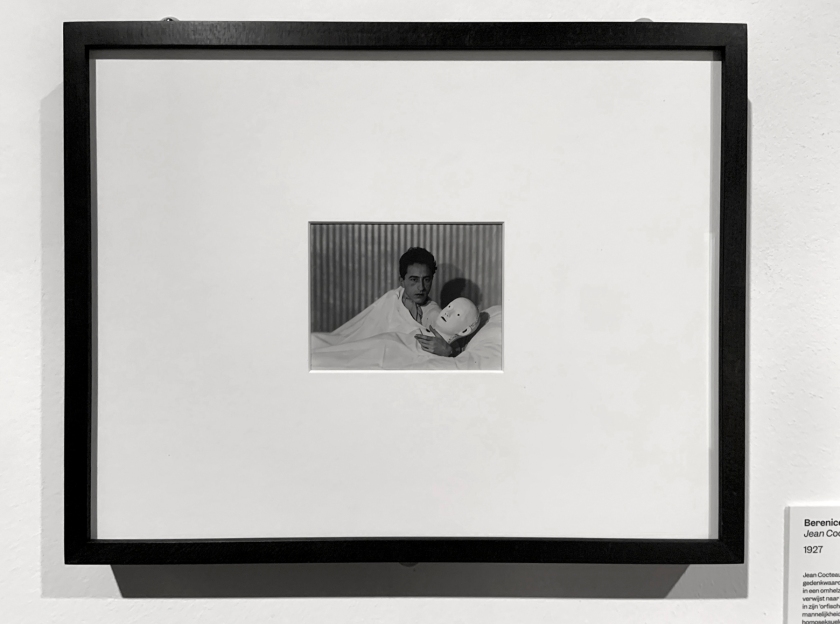
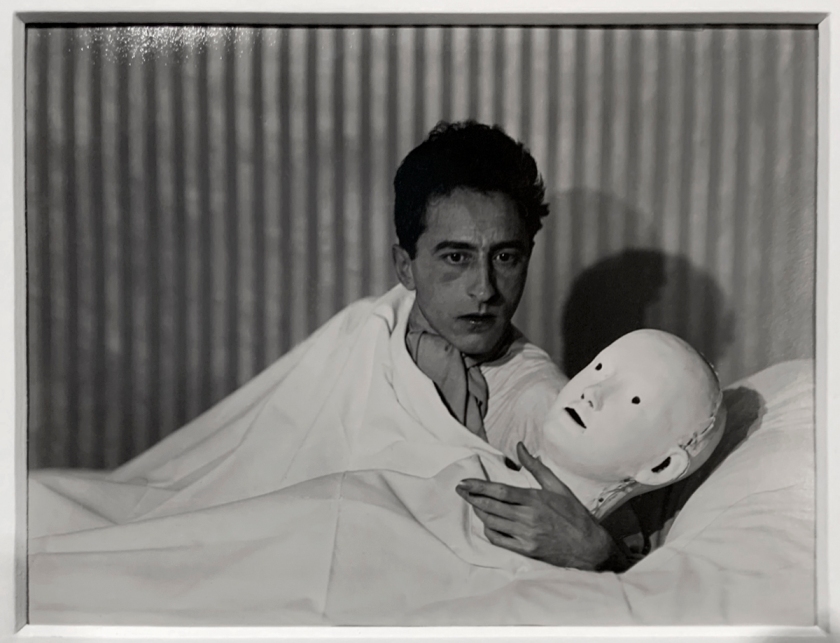

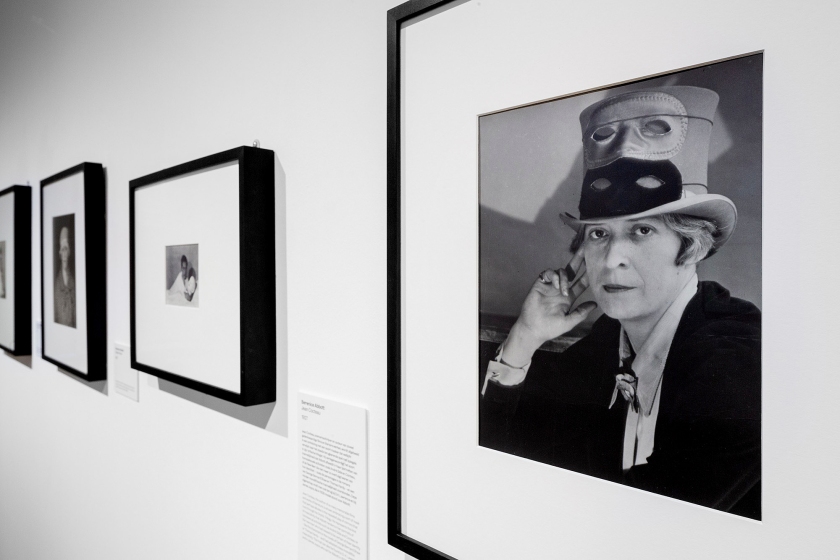


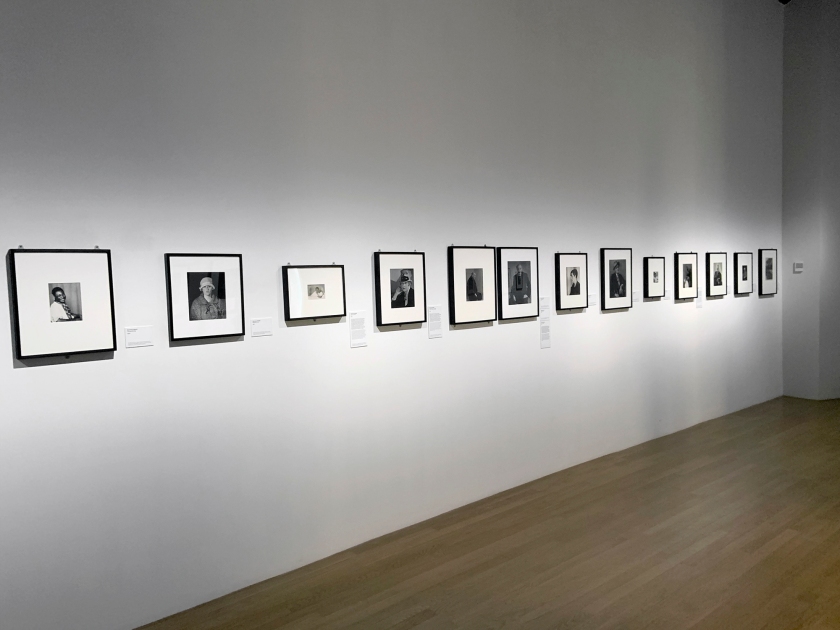
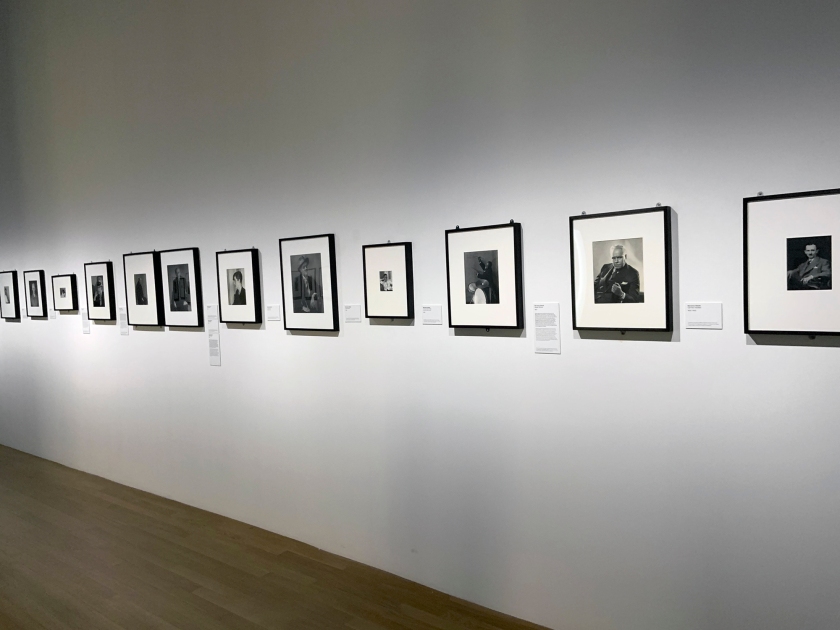













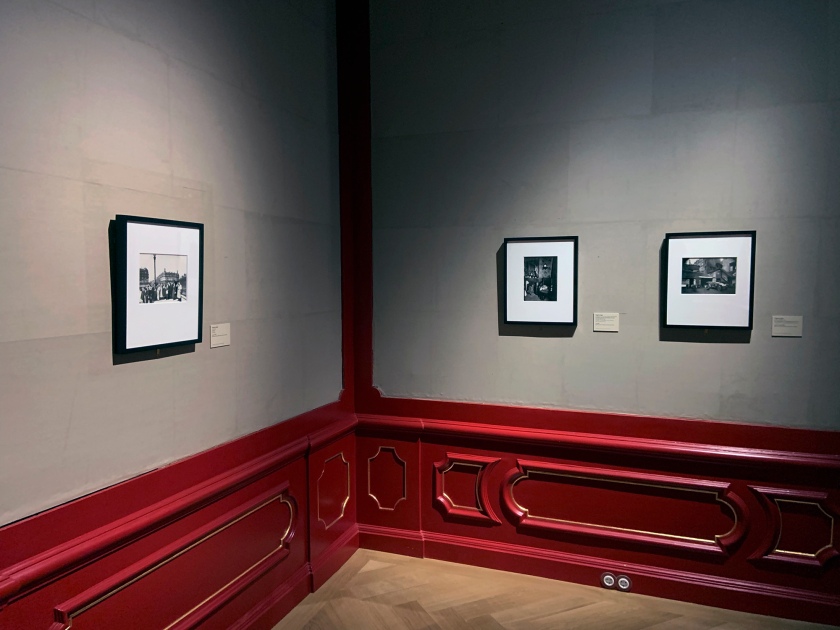
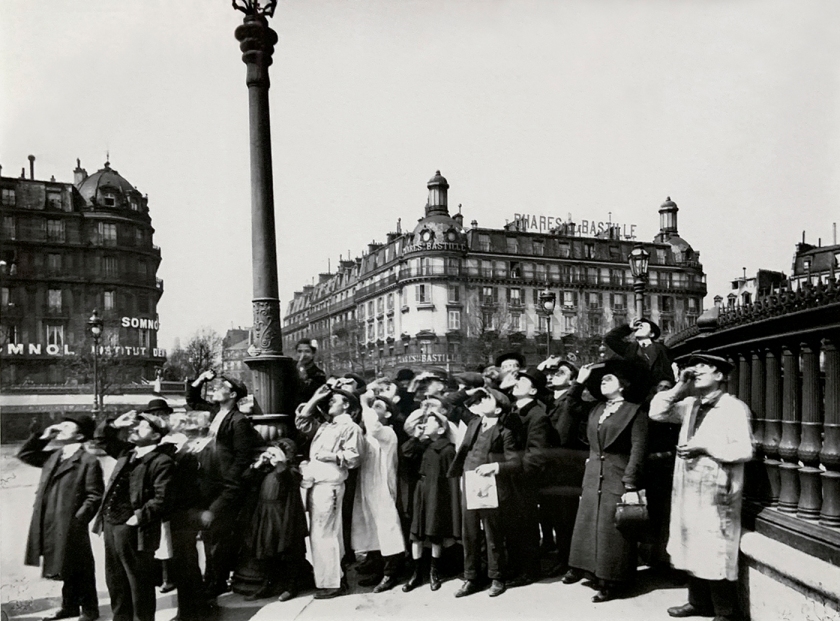





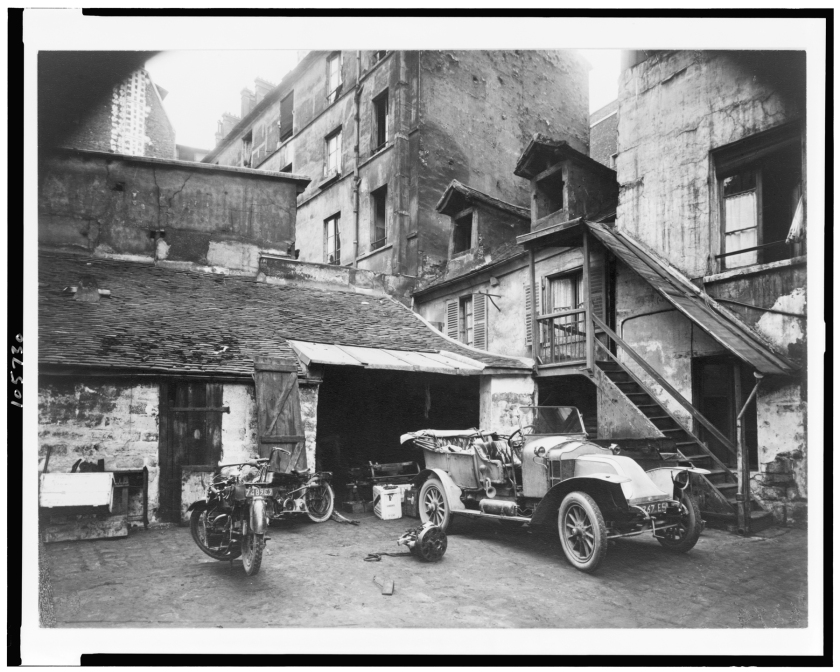
















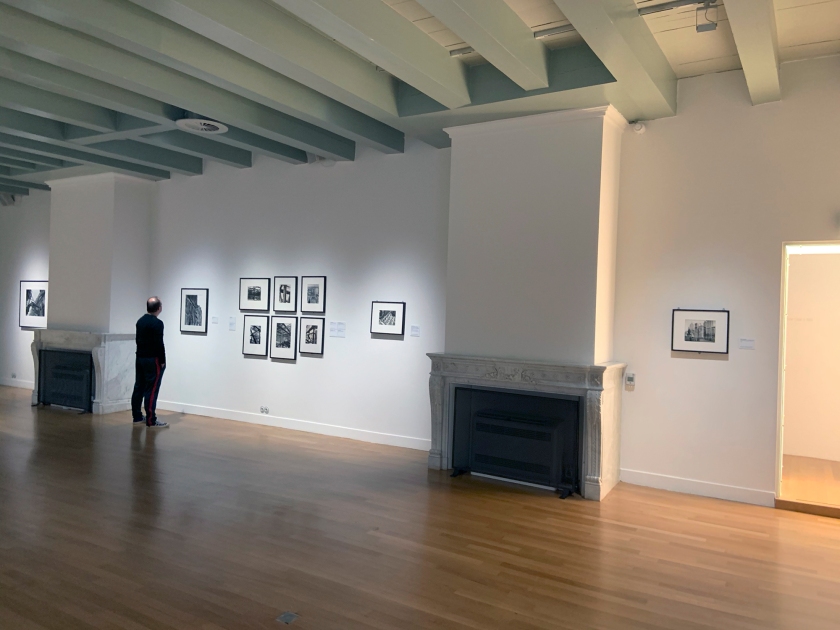
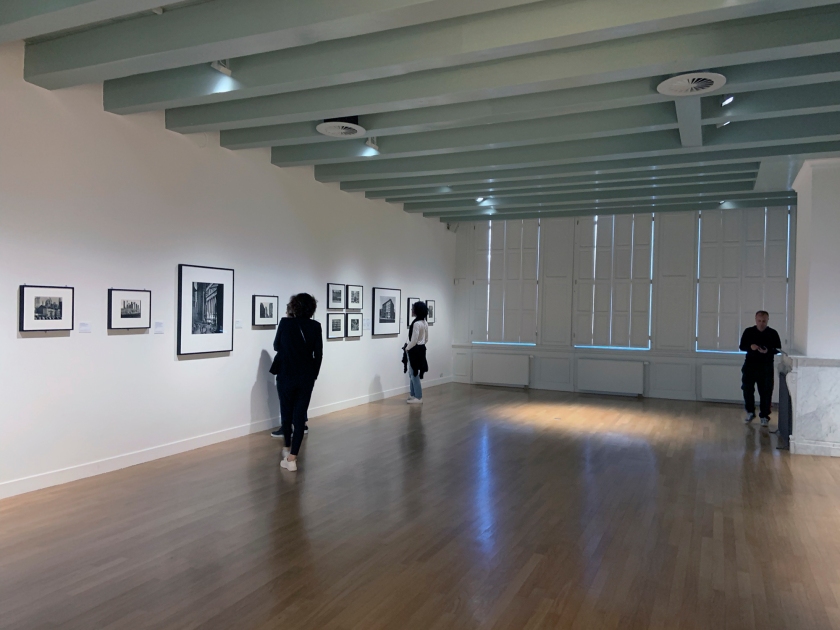
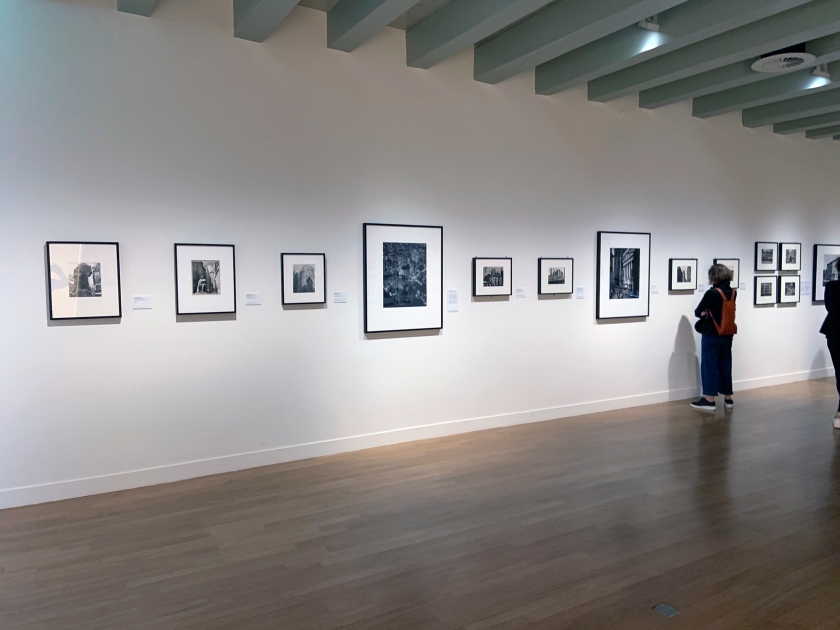
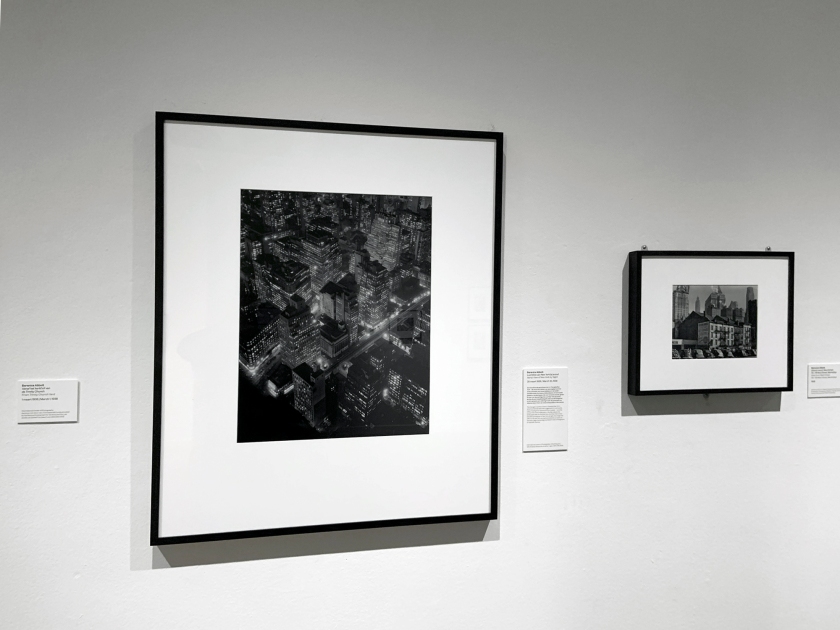

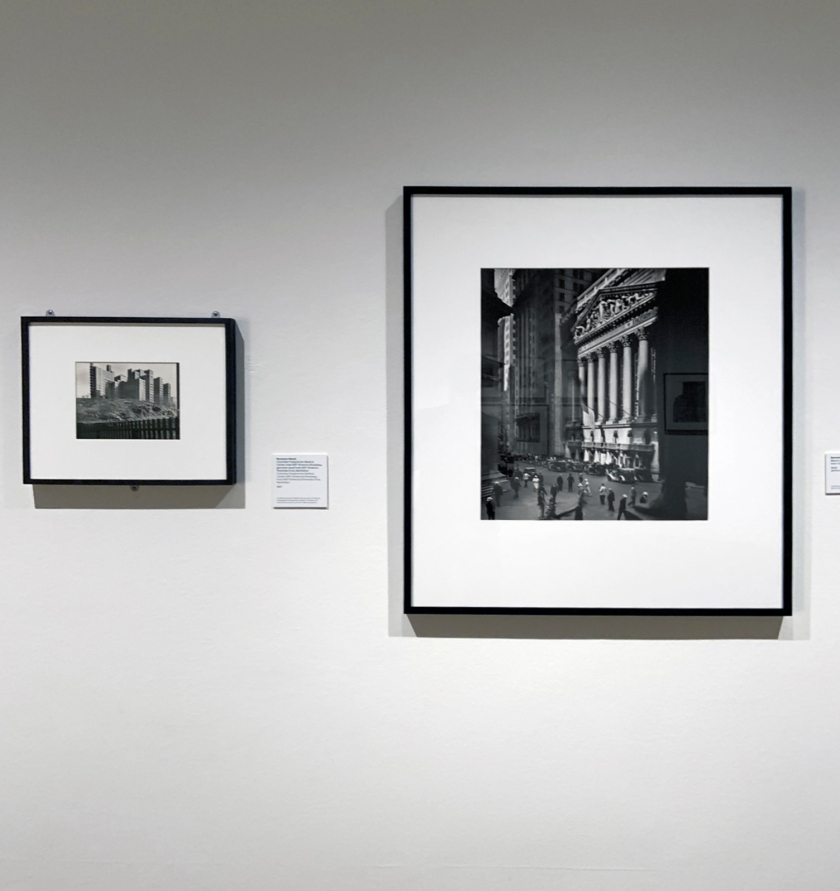



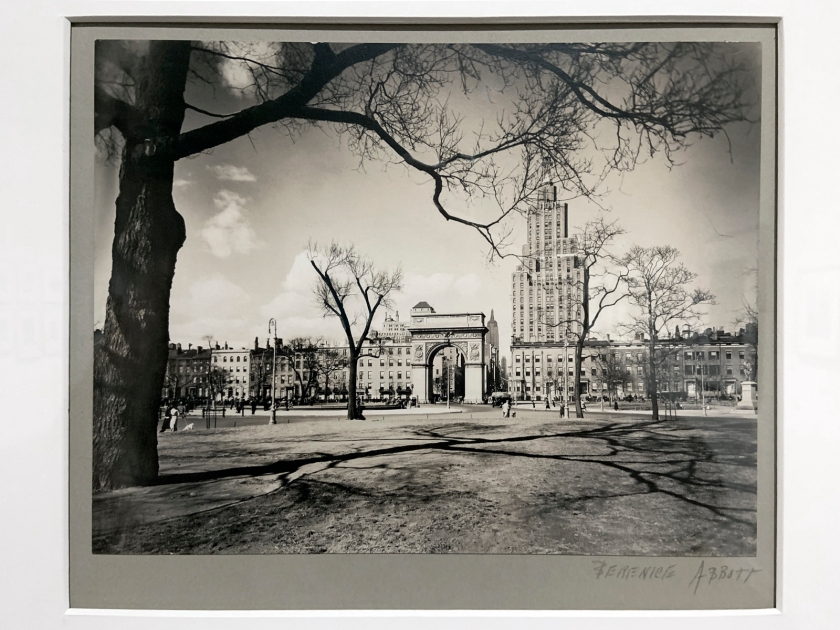


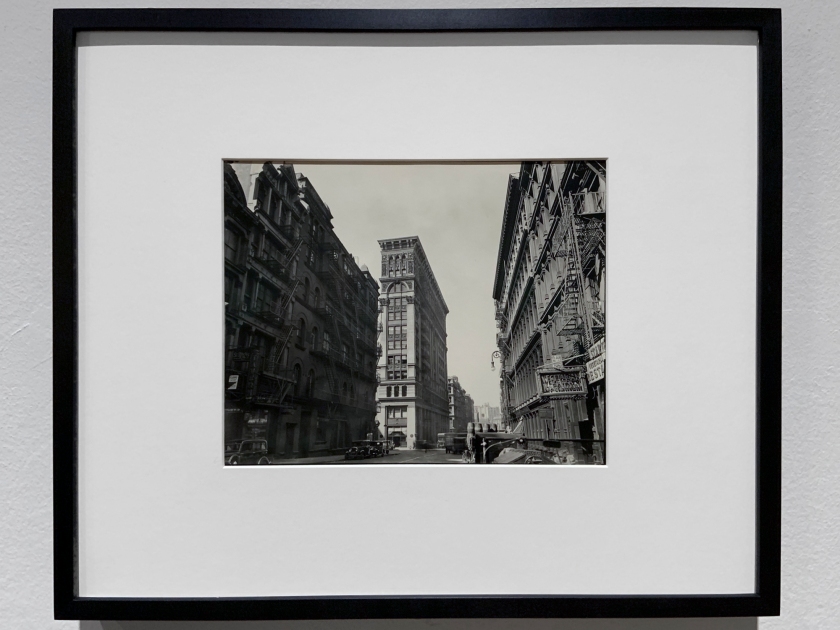

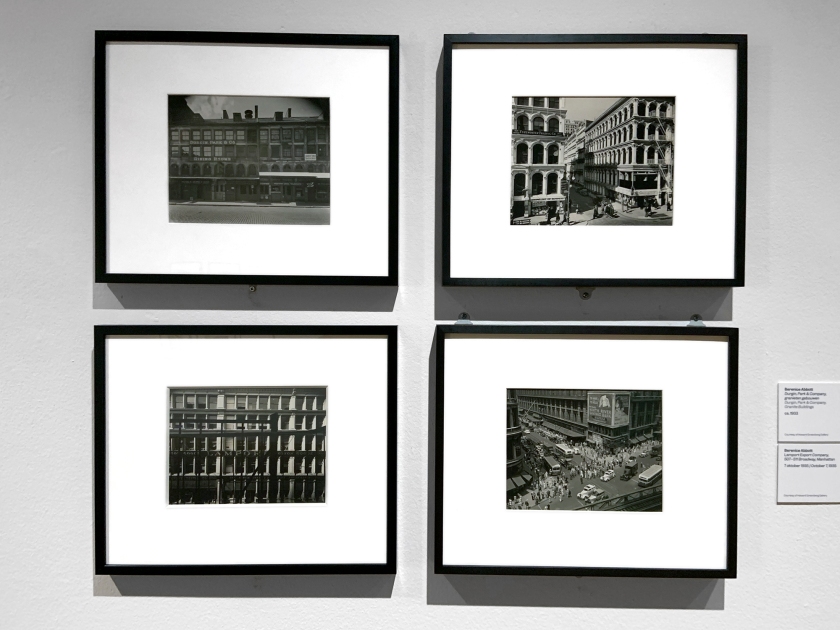
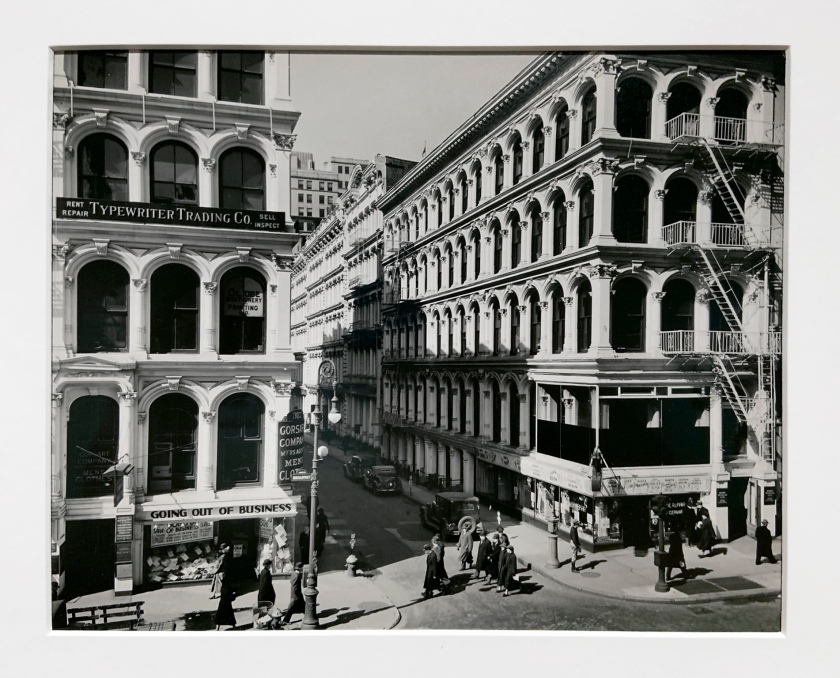
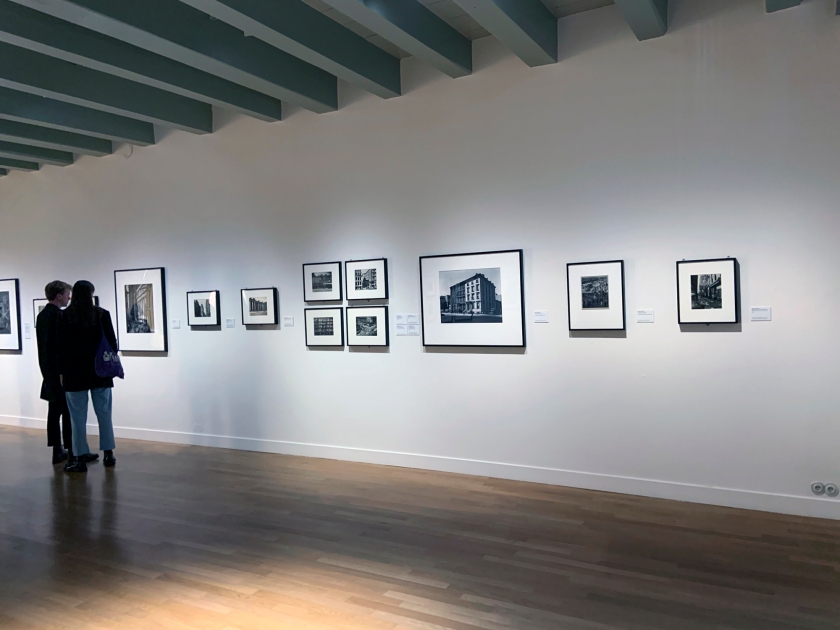

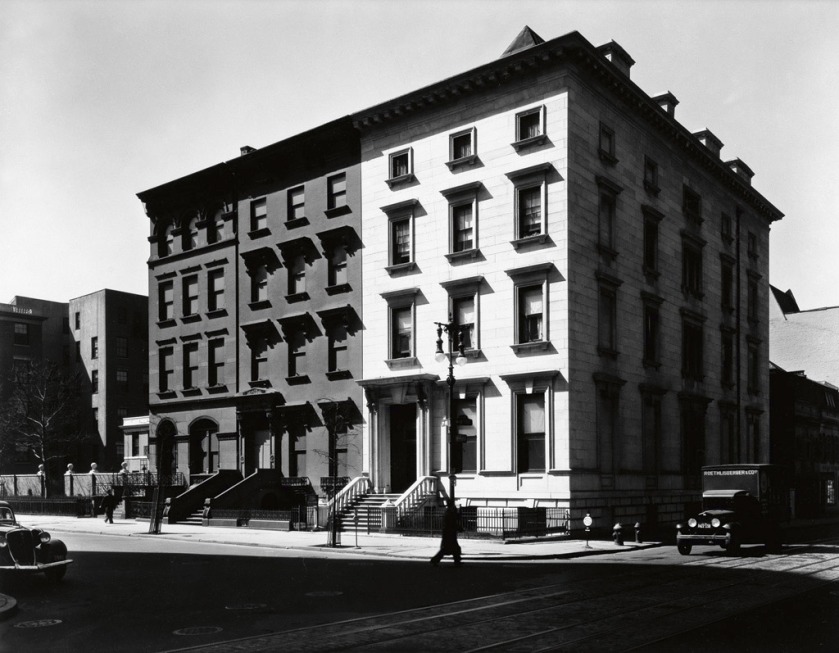


You must be logged in to post a comment.